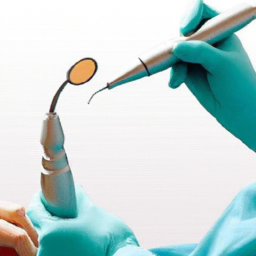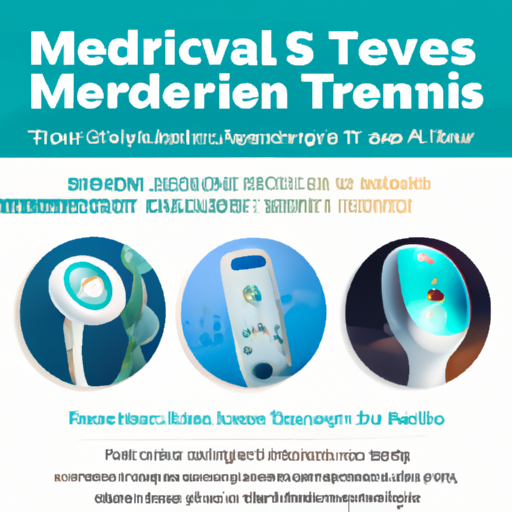Dental Industry Trends
So, you want to know what’s happening in the dental industry, huh? Well, look no further because we’ve got the lowdown on the latest dental industry trends. Whether you’re a dental professional, a patient, or simply curious about what’s shaking up the world of oral health, you’ll find this article jam-packed with insightful tidbits. From advances in technology to shifting patient preferences, we’ve got you covered. So, sit back, relax, and get ready to be informed about all things dental!
Table of Contents
Advancements in Technology
Digital Dentistry
Digital dentistry is revolutionizing the dental industry by incorporating cutting-edge technology into various aspects of oral care. With the help of digital tools, dentists can now offer more accurate diagnoses, efficient treatment planning, and precise dental restorations. Digital impressions allow for the creation of virtual models, eliminating the need for traditional messy molds. This technology also enables dentists to create customized restorations such as crowns and bridges with the help of computer-aided design (CAD) and computer-aided manufacturing (CAM) techniques. Digital dentistry has not only improved the patient experience but has also elevated the level of precision and efficiency in dental practices.
3D Printing
The introduction of 3D printing in dentistry has further enhanced the field by providing dentists with the ability to create high-quality dental models and appliances. This technology allows for the production of surgical guides, orthodontic aligners, and even prosthetic teeth. With 3D printing, dentists can save time and costs while maintaining exceptional accuracy. It offers a more streamlined workflow and increased customization options, enabling dental professionals to cater to the unique needs of their patients. The versatility and affordability of 3D printing have made it a valuable tool in the dental industry, transforming the way dental practices operate.
Artificial Intelligence
Artificial intelligence (AI) is making waves in dentistry, offering solutions that improve patient care and practice efficiency. AI algorithms can analyze radiographs and intraoral images to detect early signs of dental problems, enabling dentists to intervene at an early stage. This technology also helps in treatment planning by simulating outcomes and allowing for optimal decision-making. AI-powered chatbots are being employed for customer support and appointment scheduling, improving patient satisfaction and reducing administrative burdens. While still in its early stages, the potential of AI in dentistry is vast, and its integration will likely continue to shape the industry in the coming years.
Changing Patient Demographics
Aging Population
The global population is currently undergoing a significant shift, with a notable increase in the aging population. This demographic change brings forth unique challenges and opportunities for the dental industry. Older adults often require specialized dental care due to age-related conditions such as dry mouth, tooth loss, and gum diseases. Dental professionals must adapt to this changing demographic by providing comprehensive geriatric dental care, including preventive services and restorative treatments. Additionally, dental practices can focus on educating older adults about proper oral hygiene practices to promote better dental health and overall well-being.
Increasing Number of Children
Alongside an aging population, there has been a substantial increase in the number of children seeking dental care. Early dental intervention is crucial for maintaining oral health and preventing future dental problems. Dental professionals are recognizing the importance of educating children and their parents about proper oral hygiene, diet, and preventive measures. Pediatric dentists play a crucial role in fostering positive dental experiences for children, ensuring they develop healthy habits that will benefit them throughout their lives. As the number of children seeking dental care continues to rise, dental practices must adapt to meet their unique needs.
Focus on Preventive Care
Education and Awareness
Preventive care plays a vital role in maintaining optimal oral health. Dental practices are increasingly focusing on patient education and awareness programs to encourage individuals to take proactive measures to prevent dental issues. Through educational materials, seminars, and one-on-one discussions, dental professionals aim to empower patients with the knowledge to make informed decisions about their oral health. By emphasizing the importance of regular dental check-ups, proper oral hygiene practices, and maintaining a healthy diet, dental practices can help prevent and reduce the occurrence of dental problems in their patients.
Fluoride and Sealant Treatments
Fluoride and sealant treatments are essential preventive measures offered by dental providers. Fluoride is a mineral that strengthens tooth enamel, making teeth more resistant to decay. Dental practices often offer fluoride treatments to both children and adults as part of their preventive care services. Dental sealants, on the other hand, are thin coatings applied to the chewing surfaces of molars and premolars to protect them from decay. These treatments are particularly effective in preventing cavities and are commonly recommended for children. By prioritizing preventive care measures like fluoride and sealant treatments, dental professionals can contribute to better oral health outcomes for their patients.
Integration of Oral and Overall Health
Link between Oral Health and Systemic Conditions
Research continues to demonstrate the intricate connection between oral health and overall health. Poor oral health has been linked to various systemic conditions, including cardiovascular disease, diabetes, respiratory infections, and adverse pregnancy outcomes. Recognizing this link, dental professionals are increasingly collaborating with medical professionals to provide comprehensive healthcare. Dentists and physicians are working together to identify and address oral health issues early on, subsequently improving patients’ overall well-being. By integrating oral health screenings and discussions into routine medical visits, healthcare professionals can take a proactive approach towards addressing systemic conditions associated with poor oral health.
Collaboration with Medical Professionals
The integration of oral and overall health is further strengthened by the collaboration among dental and medical professionals. Dental practices are partnering with primary care physicians and specialists to ensure a holistic approach to patient care. This collaborative effort involves sharing patient information, coordinating treatment plans, and addressing oral health concerns that may impact medical conditions. By working together, dental and medical professionals can enhance patient outcomes, improve communication, and provide a more comprehensive healthcare experience.
Tele-dentistry
Remote Consultations and Diagnoses
Tele-dentistry has emerged as a valuable solution, particularly in areas with limited access to dental care. Through tele-dentistry, patients can receive remote consultations and diagnoses, eliminating the need for unnecessary travel to a dental office. Dentists can use video conferencing and imaging technology to assess oral health concerns, provide recommendations, and guide patients on appropriate treatment options. This technology has proven especially useful during the COVID-19 pandemic, enabling dental practices to continue serving patients while adhering to social distancing protocols. Tele-dentistry has the potential to bridge the gap in access to dental care, making oral healthcare more accessible and convenient for patients.
Virtual Treatment Planning
Virtual treatment planning allows dental professionals to collaborate remotely, creating comprehensive treatment plans with input from multiple specialists. Through digital platforms, dentists can share patient records, radiographs, and 3D models, facilitating effective communication and coordination. This technology is particularly beneficial for complex cases that require interdisciplinary approaches. Dentists can consult with orthodontists, oral surgeons, and other specialists to ensure optimal treatment outcomes. Virtual treatment planning streamlines the process, minimizes the need for physical referrals, and improves the overall efficiency and accuracy of treatment delivery.
Environmental Sustainability
Eco-friendly Dental Materials
As environmental awareness grows, dental practices are adopting more sustainable practices. One significant area of focus is the use of eco-friendly dental materials. Traditional dental materials often contain hazardous substances and generate excessive waste. However, advancements in material science have led to the development of alternatives that are biodegradable and have a reduced environmental impact. Eco-friendly dental materials, such as biocompatible resins and recyclable packaging, contribute to a more sustainable dental industry. By incorporating these materials into their practices, dentists can help reduce their ecological footprint and promote a healthier planet.
Green Practices
In addition to eco-friendly materials, dental practices are implementing green practices to minimize their environmental impact. These practices include energy-efficient lighting, water-saving devices, and waste management systems. By reducing energy consumption and waste generation, dental practices can contribute to a greener future. Some dental offices are also adopting paperless systems, utilizing electronic records and digital communication tools to reduce paper usage. These green practices not only benefit the environment but also position dental practices as socially responsible entities, attracting environmentally conscious patients and supporting sustainable development.
Expanding Scope of Dental Services
Cosmetic Dentistry
Cosmetic dentistry has gained popularity as patients increasingly seek ways to enhance their smiles and boost their confidence. Dental practices now offer a wide range of cosmetic procedures, including teeth whitening, veneers, and dental bonding. Affordable and minimally invasive treatments, such as in-office teeth whitening, allow patients to achieve noticeable improvements in their smiles quickly. With advancements in technology and materials, cosmetic dentistry has become more accessible and offers natural-looking results. The expansion of cosmetic services provides patients with more options to address aesthetic concerns and achieve the smile they desire.
Dental Implants
Dental implants have become the preferred solution for replacing missing teeth due to their durability, functionality, and natural appearance. The demand for dental implants continues to grow as patients recognize the benefits they offer over traditional options like dentures and bridges. Implant technology has rapidly advanced, allowing for shorter treatment times and improved success rates. With computer-guided implant placement and the use of CAD/CAM technology, dentists can ensure precise implant positioning and produce custom restorations for optimal esthetics and function. Dental practices specializing in implantology cater to the increasing demand for this transformative dental service.
Orthodontics
Orthodontics has evolved significantly, with innovative treatments making it more convenient and discreet than ever before. Traditional metal braces have been complemented by alternatives such as ceramic braces and clear aligners, providing patients with discreet options to correct misalignments. Invisalign, a popular clear aligner system, has revolutionized orthodontic treatment, offering a nearly invisible and removable solution. Additionally, advancements in digital technology, such as intraoral scanners and 3D treatment planning, have improved the accuracy and efficiency of orthodontic treatments. The expanding scope of orthodontic services accommodates the growing demand for teeth straightening and bite correction in patients of all ages.
Rise of Dental Support Organizations (DSOs)
Consolidation of Dental Practices
The rise of Dental Support Organizations (DSOs) has led to the consolidation of dental practices, creating larger networks of dental providers. DSOs offer administrative and operational support to dental practices, allowing dentists to focus on patient care while benefiting from economies of scale. By joining a DSO, independent practices gain access to advanced management systems, centralized billing, marketing support, and purchasing power. Consolidation can lead to increased efficiency and improved patient experiences, as standardized protocols and best practices are implemented across the network. The rise of DSOs has changed the landscape of dental practices, offering new career opportunities for dental professionals and expanding patient access to high-quality dental care.
Streamlined Operations
One of the significant advantages of DSOs is the implementation of streamlined operations through the adoption of practice management software. These software platforms automate administrative tasks such as appointment scheduling, billing, and record-keeping, reducing paperwork and improving practice efficiency. By embracing technology and digital solutions, DSOs ensure consistency and accuracy in operations across their network of dental practices. Additionally, practice management software enables enhanced patient communication, with features like appointment reminders and secure messaging systems. The integration of technology into dental practice management allows for more streamlined and patient-centered care.
Practice Management Software
Automation of Administrative Tasks
Practice management software has revolutionized dental offices by automating various administrative tasks. Appointment scheduling, billing, and insurance claims processing can now be handled efficiently through software platforms. Automation not only saves time but also minimizes errors and allows dental staff to focus on providing quality patient care. With features like electronic prescribing and inventory management, practice management software streamlines workflow and ensures optimal practice efficiency. Dental practices of all sizes can benefit from the automation provided by these software systems, reducing administrative burdens and improving overall productivity.
Enhanced Patient Communication
In addition to administrative automation, practice management software also facilitates enhanced patient communication. Many software platforms offer patient portals or mobile applications that allow patients to access their dental records, schedule appointments, and communicate securely with their dental providers. These tools improve patient engagement and satisfaction by providing convenient access to information and streamlined communication channels. Enhanced patient communication also fosters a stronger patient-provider relationship, enabling dental practices to deliver personalized and patient-centered care. With practice management software, dental practices can optimize their communication strategies and improve the overall patient experience.
Workforce Shortages and Career Opportunities
Shortage of Dental Professionals
As the demand for dental services continues to grow, there is a notable shortage of dental professionals to meet the needs of the population. This shortage is particularly evident in certain areas or underserved communities where access to dental care is limited. The shortage of dental professionals presents both challenges and opportunities for the dental industry. Dental practices are exploring ways to attract and retain talented professionals, offering competitive compensation packages, mentorship programs, and flexible work arrangements. Additionally, dental schools and organizations are working to increase the capacity for dental education to address the workforce shortage effectively.
Expanding Career Paths
The evolving landscape of the dental industry has created new career opportunities for dental professionals. Beyond traditional roles as dentists, dental assistants, and hygienists, professionals can now explore alternative career paths. Specializations in areas such as implantology, orthodontics, and cosmetic dentistry offer avenues for career growth and professional development. Dental professionals can also venture into research, academia, or dental technology development. The expanding career paths within the dental industry provide professionals with diverse opportunities to pursue their passions and make a meaningful impact in the field.
In conclusion, the dental industry is undergoing significant transformations driven by advancements in technology, changing patient demographics, a focus on preventive care, integration of oral and overall health, tele-dentistry, environmental sustainability, expanding scope of dental services, rise of Dental Support Organizations (DSOs), practice management software, and workforce shortages. These trends are shaping the way dental practices operate, enhancing patient experiences, and improving oral health outcomes. As the dental industry continues to evolve, it is crucial for dental professionals to embrace these trends and adapt to the changing landscape to provide the best possible care for their patients.





